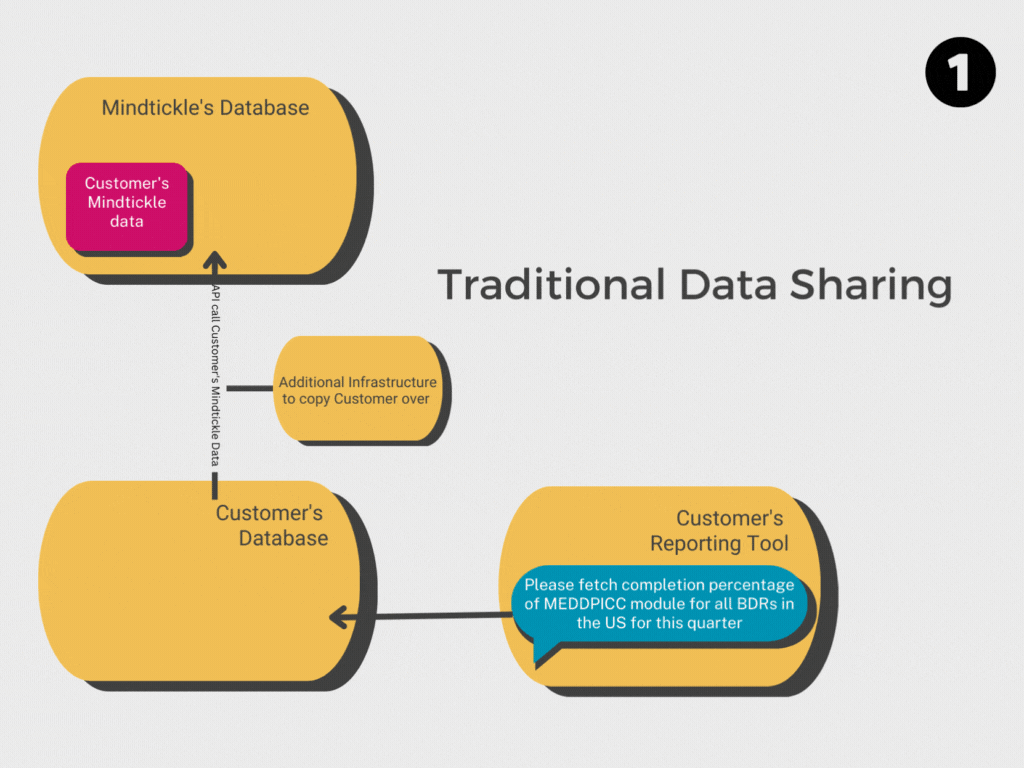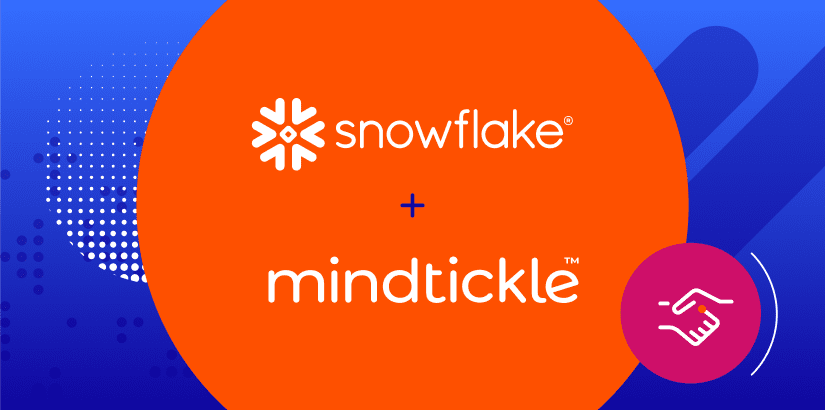Drive Better Decision-Making + Productivity with Mindtickle and Snowflake
Satya Sai Kommireddy
on
May 25, 2023
Data is critical to effective sales enablement. On our blog, we’ve talked previously about how to achieve data-driven transformation in your sales enablement organization and how to have coaching conversations with sellers informed by data.
And now we’re taking you under the hood to give you the backstory on why our latest feature, data sharing with Snowflake, is amplifying and optimizing how sales teams access, analyze and combine their sales enablement data with other sources.
This feature empowers our customers to unlock contextual, holistic insights that can drive better decision-making and increase productivity.
In this blog post, we’ll outline the problem with the traditional methods and how we’ve tackled them, our partnership with Snowflake, some of the ways our customers will see benefits, and next steps for anyone interested in learning more about what this could mean for your own revenue productivity approach.
The problem with traditional methods and how we’ve tackled them
Let’s set the stage for why this partnership is significant.
Traditional methods of sharing reporting data can be cumbersome and inefficient, hindering the true potential of sales data.
Organizations have relied on methods such as API-based data transfers and custom integrations to extract, transform, and load (ETL) data into their systems for reporting purposes. These methods often require additional code and resources and organizations need to encrypt and decrypt the data to make it more secure.
As data is transferred and copied, organizations must ensure that all data compliance and protection rules are followed. Data needs to be manually synchronized between different systems, taking a significant amount of time and effort. This also leads to inconsistencies, which means decisions are made based on an inaccurate representation.
The ideal approach would be performant, scalable, and maintainable. In all the traditional approaches, organizations need to check various metrics to ensure they are populating the correct data in their warehouses.
And this is where our data-sharing partnership with Snowflake enters the equation.
Our partnership with Snowflake
Unlike the traditional approaches outlined above, data will not be duplicated in data sharing with Snowflake. All our customers’ data will reside in Mindtickle’s Snowflake account and a secure data share is created between our account and the customer’s Snowflake account.
Using this secure share, customers can run SQL-compliant queries to fetch the data. On top of solving the duplication issue, this method also means that there is no additional storage cost for our customers.

No additional infrastructure
Data sharing with Snowflake eliminates the need for API-based data transfers and custom integrations to extract, transform, and load (ETL) data into customer systems. With Snowflake’s native SQL access, customers can directly access the data without any additional infrastructure or ETL pipelines.
So what does this mean for customers? They have access to cleaner, more reliable data and it eliminates data duplication, unnecessary additional code and data pipelines, or infrastructure for storage, reducing overall infrastructure costs.
Customers can be confident of the accuracy, consistency, and quality of the data, since it is drawn directly from the database where Mindtickle stores it. This approach is more efficient, and cost-effective, and doesn’t compromise on data security or quality.
With all the time and resources saved, Mindtickle and Snowflake enable customers to focus on driving toward their business goals and decision-making rather than worrying about the complexities of data management.
Faster insights
In today’s competitive market, businesses need access to accurate insights quickly to stay ahead of the curve and respond to evolving trends and behaviors. These insights can provide valuable opportunities for enablement and revenue teams to make data-driven decisions.
Without this sort of data sharing, data extraction involves exporting and duplicating data or using APIs that require developers to build code to automate, making the process time-consuming and expensive. Mindtickle’s data sharing with Snowflake allows instant access without the need for complex ETLs or pipeline integrations saving both time and money.
Our customers’ analysts and data scientists can easily access clean, organized tables in an easy-to-query format using Snowflake’s SQL-based syntax. Moreover, the shared data stays up-to-date through a regular sync, and improvements can be rolled out quickly without the need for engineering involvement.
Through sharing our data with Snowflake, Mindtickle provides a faster and more efficient approach to data access, enabling businesses to respond quickly and stay ahead of the competition.
Security
Data always needs to be encrypted and decrypted to ensure security. When the data is transferred or stored in different locations, all the data compliance and protection rules need to be checked to meet the contractual requirements. These methods carry an inherent risk as the data is continuously moved and duplicated.
With Snowflake and Mindtickle, data is not copied or transferred, but instead remains securely in the Mindtickle Snowflake account, with customers being given full access using secure data share to view, join, compute, and query the data as if it were in their own Snowflake account.
On top of that, Snowflake’s services layer and metadata store ensure data sharing is safe and secure, with access carefully managed to ensure that only authorized users can see the data.
Having the right data in the right tool is a game-changer for revenue organizations. Mindtickle empowers our customers to marry data from other platforms with their enablement data to unlock valuable insights.
Mindtickle’s collaboration with Snowflake represents a significant step forward and demonstrates the company’s commitment to providing innovative solutions that drive success for its customers. For customers looking to get started using Data Sharing with Snowflake, take a look at this help article.
Want to see for yourself?
Get in touch with our team to see how enablement data can be contextualized and actioned through data sharing with Snowflake.


